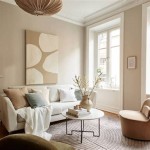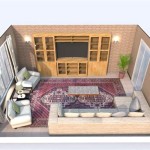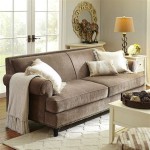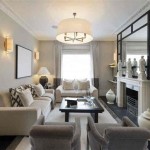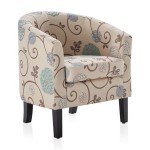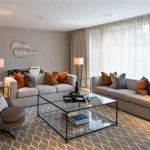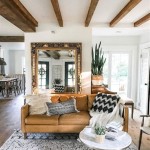Floor Lamp Shades for Living Rooms: A Comprehensive Guide
Floor lamps are versatile lighting solutions that can significantly enhance the ambiance and functionality of a living room. They provide supplemental lighting, fill dimly lit corners, and contribute to the overall aesthetic appeal of the space. A crucial component of any floor lamp is its shade, which influences both the quality and direction of the light emitted, as well as the lamp's visual style. Selecting the appropriate floor lamp shade involves considering several factors, from material and shape to size and color, to ensure optimal performance and design harmony within the living room.
The importance of floor lamps in interior design extends beyond mere illumination. They serve as decorative elements, accentuating furniture, complementing color schemes, and adding visual height to a room. Unlike ceiling fixtures, floor lamps are easily repositioned, allowing for flexible lighting arrangements to suit different activities or moods. The shade plays a pivotal role in this adaptability, directing light upwards for ambient illumination, downwards for reading, or diffusely throughout the space for a softer glow. This adaptability allows for a customization of the living room that many other lighting sources can not provide.
Understanding Different Shade Materials
The material of a floor lamp shade directly impacts the quality and intensity of the light it emits. Different materials offer varying degrees of opacity and texture, resulting in distinct lighting effects. When choosing a material, the desired ambiance and the lamp's intended use should be thoughtfully considered.
Fabric Shades: Fabric shades are a popular choice for living rooms due to their versatility and aesthetic appeal. Common fabric options include linen, cotton, silk, and burlap. Linen and cotton offer a soft, diffused light, creating a warm and inviting atmosphere. Silk shades provide a more luxurious feel, often featuring a subtle sheen that adds elegance to the room. Burlap shades offer a textured, rustic look, ideal for bohemian or farmhouse-style interiors. The color and thickness of the fabric also influence the light transmission. Lighter colors allow more light to pass through, while darker shades tend to concentrate the light downwards or upwards.
Glass Shades: Glass shades offer a range of options, from clear and frosted to colored and patterned. Clear glass allows for maximum light transmission, showcasing the bulb and creating a brighter, more direct light. Frosted glass diffuses the light, reducing glare and creating a softer ambiance. Colored glass can add a touch of personality and warmth to the room, casting a subtle hue on the surrounding surfaces. Patterned glass shades introduce visual interest and texture, creating unique light patterns on the walls and ceiling. Glass is relatively easy to clean and maintain, making it a practical choice for high-traffic areas.
Metal Shades: Metal shades, typically made of steel, brass, or copper, offer a more industrial or contemporary look. They are often used in minimalist or modern living rooms. Metal shades generally direct light downwards, creating a focused pool of illumination. The interior finish of the shade can influence the light quality. A white or reflective interior will maximize light output, while a darker interior will absorb more light, resulting in a softer, more subdued glow. Perforated metal shades create interesting light patterns and add a decorative touch. While durable, metal shades can become hot to the touch when the lamp is in use for extended periods.
Paper Shades: Paper shades, including parchment and rice paper, provide a delicate and translucent quality. They emit a soft, warm light, creating a relaxing and inviting atmosphere. Paper shades are often used in Asian-inspired or minimalist interiors. They are lightweight and relatively inexpensive, but they are also more susceptible to damage and discoloration than other materials. Paper shades require careful handling and should be protected from moisture and direct sunlight.
Synthetic Shades: Synthetic materials, such as acrylic and polyester, offer durability and versatility. They are available in a wide range of colors, textures, and patterns, making them suitable for various design styles. Synthetic shades are often water-resistant and easy to clean, making them a practical choice for busy households. They can mimic the look of natural materials like linen or silk at a lower cost. The light transmission properties of synthetic shades vary depending on their thickness and color.
Choosing the Right Shade Shape and Size
The shape and size of a floor lamp shade should be proportionate to the lamp base and the surrounding furniture. A shade that is too small or too large can look unbalanced and detract from the overall aesthetic appeal of the room. The shape of the shade also influences the direction and distribution of light.
Drum Shades: Drum shades are cylindrical in shape, offering a modern and contemporary look. They provide a uniform distribution of light, both upwards and downwards. Drum shades are versatile and can be used with a variety of lamp bases. They are particularly well-suited for minimalist or transitional living rooms. The diameter of the drum shade should be proportionate to the height and width of the lamp base. A general rule of thumb is that the shade's diameter should be approximately one-third to one-half the height of the lamp base.
Empire Shades: Empire shades are wider at the bottom than at the top, creating a classic and elegant silhouette. They direct light downwards, making them suitable for reading or task lighting. Empire shades are often used in traditional or formal living rooms. The angle of the shade should complement the curves of the lamp base. The bottom diameter of the shade should be wider than the widest part of the lamp base to create a balanced look.
Square or Rectangular Shades: Square or rectangular shades add a geometric element to the room. They are often used in contemporary or modern interiors. These shades tend to direct light upwards and downwards, creating a focused beam of illumination. The dimensions of the shade should be proportionate to the lamp base and the surrounding furniture. A square shade works well with a square or angular lamp base, while a rectangular shade complements a rectangular or taller lamp base.
Bell Shades: Bell shades are curved and rounded, resembling the shape of a bell. They provide a soft, diffused light, creating a warm and inviting atmosphere. Bell shades are often used in traditional or romantic living rooms. The curve of the shade should complement the curves of the lamp base. The bottom diameter of the shade should be wider than the widest part of the lamp base to create a balanced look.
Novelty or Unique Shapes: For those seeking a more unconventional look, novelty or unique-shaped shades are available in a variety of designs. These shades can add a playful or artistic touch to the room. However, it is important to ensure that the shape of the shade complements the overall design style of the living room and does not overwhelm the space. The size and shape of the shade should be carefully considered to ensure that it provides adequate illumination and does not create unwanted shadows.
Considering Color and Light Output
The color of a floor lamp shade significantly influences the quality of light emitted and the overall ambiance of the living room. Lighter colors allow more light to pass through, creating a brighter and more energizing atmosphere, while darker colors tend to absorb more light, resulting in a softer and more subdued glow. The color of the shade should complement the existing color scheme of the room and create a cohesive design.
White or Off-White Shades: White or off-white shades offer a clean and neutral look, providing maximum light output. They are versatile and can be used with a variety of lamp bases and design styles. White shades are ideal for rooms that require ample lighting or for areas where task lighting is needed. They create a bright and airy atmosphere, making the room feel more spacious and inviting. However, white shades can sometimes appear too stark or clinical, so it is important to balance them with other warm colors and textures in the room.
Black or Dark-Colored Shades: Black or dark-colored shades create a dramatic and sophisticated look. They absorb more light, resulting in a softer and more subdued glow. Dark shades are ideal for creating a cozy and intimate atmosphere. They are often used in bedrooms or living rooms where relaxation is desired. Dark shades can also be used to highlight artwork or architectural features by creating a focused pool of light. However, dark shades can make a room feel smaller and dimmer, so it is important to use them sparingly and balance them with lighter colors and ample natural light.
Colored Shades: Colored shades add a touch of personality and warmth to the room. They cast a subtle hue on the surrounding surfaces, creating a unique and inviting atmosphere. The choice of color should complement the existing color scheme of the room and reflect the desired mood. Warm colors like red, orange, and yellow create a cozy and inviting atmosphere, while cool colors like blue, green, and purple create a calming and relaxing atmosphere. The intensity of the color should be carefully considered to ensure that it does not overwhelm the space.
Patterned Shades: Patterned shades add visual interest and texture to the room. They can be used to complement or contrast with the existing patterns and textures in the room. The pattern should be proportionate to the size of the shade and the surrounding furniture. Small-scale patterns work well in smaller rooms, while larger-scale patterns are better suited for larger rooms. The color and style of the pattern should complement the overall design style of the living room. Geometric patterns add a modern and contemporary touch, while floral patterns add a traditional and romantic touch.
Light Output Considerations: The color and material of the shade directly influence the light output. As a general rule, lighter colors and more transparent materials allow more light to pass through, while darker colors and more opaque materials absorb more light. The wattage of the bulb should be chosen based on the desired level of illumination and the light transmission properties of the shade. It is important to consider the intended use of the lamp when selecting the bulb wattage. For reading or task lighting, a higher wattage bulb may be necessary, while for ambient lighting, a lower wattage bulb may be sufficient.

Hdc Velvet Lamp Shade Classic Standing For Living Room And Bedroom Foot Switch Design

Modern Silver Floor Lamp Standing For Living Room Bed Satin Nic Divine Trends

Buy Floor Lamp Upto 55 Off Online Living Room Lights From Wooden Street

Aluminium Standing Night Floor Lamp With Black Shade Ikiru

Lamp Shade Black Color Bedside Lampshades For Table And Floor Lamps Drum Shape In Small To Large Sizes

Boho Rattan Lamp Shade For Living Room Office Cafe Restaurants Bar At 2950 Floor In New Delhi Id 2852769350888

Buy N Tribal Lamp Shade Boho Hippie Bedside Décor Warm Living Room Light Cosy Online In Etsy

Modern Floor Lamp Standing Brass Antique Gold For Living Room Bedroom Divine Trends

Tall Pole Standing Lamp With 3 Decorative Cylindrical Shades Classy Contemporary For Living Room Office Bedroom

Cotton Conical Shade With Iron Floor Lamp

